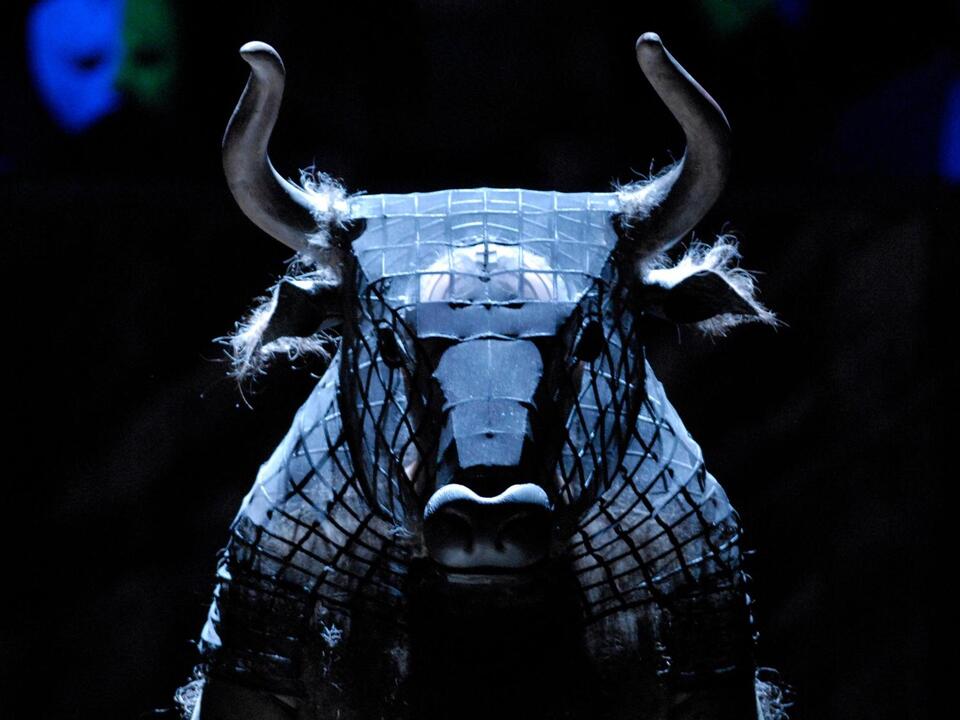Physical Address
304 North Cardinal St.
Dorchester Center, MA 02124
Physical Address
304 North Cardinal St.
Dorchester Center, MA 02124

Mark Haddon’s 2019 novel, “The Porpoise,” draws from the story of Pericles as told by Shakespeare. It revolves around a prince revealing a devastating truth about a powerful king, leading him to flee for safety and embark on a life of nomadic adventures. Haddon’s delight in formal complexity is evident, matched by his storytelling prowess.
The new collection “Dogs and Monsters” follows suit with eight compelling stories, sharing common themes and recurring imagery, primarily the titular dogs and monsters. Diverse in setting, these stories celebrate the enduring power of myth and the countless ways myths can be retold.
“The Mother’s Story” reimagines the Minotaur myth from a fresh perspective. Here, we are in southern England, long after the legendary events. The climate is damp, servants flee the palace seeking directions to Norwich, and the bull-child’s mother is given a volume of Montaigne’s essays. A skilled engineer is tasked with building a maze for a monster, though the real monster is debatable. The hardened engineer participates in the fiction for his survival, while his idealistic son resists the deception. The mother urges us to question not just her story but stories in general, asking, “Where am I being encouraged not to look?”
The diverse stories in this collection share a fascination with the myriad ways myths can be retold.
“D.O.G.Z.” draws from the story of Actaeon, the hunter punished after witnessing the goddess Diana bathing. Haddon shines in evoking the natural setting – the heat, scents of dung and dry grass, and camaraderie among men. The love Actaeon holds for his dogs adds pathos, showing how stories transcend time, especially reflecting the enduring bond between humans and dogs.
“My Old School” reflects on school days often marked by suffering. A man in middle age recounts his time in a boarding school, compared to prison with its complex social rules. He avoids forming friendships to stay protected but is drawn in by a pupil named Meyer. The story delves into the ambiguity of bullying, making readers question who the real bully might be. It’s about betrayal, and how the passage of time can be weaponized.
“The Wilderness” echoes HG Wells’s “The Island of Doctor Moreau” and Stephen King’s “The Girl Who Loved Tom Gordon,” starting as a survival tale that spirals into darker complexities. It’s an example of Haddon’s knack for transitioning into more sinister territories.
Equally eerie is “The Bunker,” inspired by National Trust properties. Set around the York cold war bunker, once used to monitor radioactive fallout, people in an alternate 1960s face haunting visions of a post-nuclear world. Nadine’s hope lies in an “exorcist,” hinting at deeper madness. The story is chilling, effective in its ambiguity.
Some stories meander, like “The Temptation of St Anthony” and “The Quiet Limit of the World,” reflecting on mortality and the passage of time. “St Brides Bay,” a homage to Virginia Woolf’s “The Mark on the Wall,” demonstrates stream-of-consciousness narrative. Haddon’s writing elevates these stories, featuring luminous moments like the spacedog Laika’s poetic transformation in “D.O.G.Z.” or the ancient Kristof’s depiction in “The Quiet Limit of the World.”
Haddon’s reminder in “The Mother’s Story” that “There is nothing more terrifying than the monster that squats behind the door you dare not open” encapsulates the essence of this collection. Each story opens doors to unexpected landscapes, complex characters, and rich entertainments that balance monsters and miracles.
Source: The Guardian



